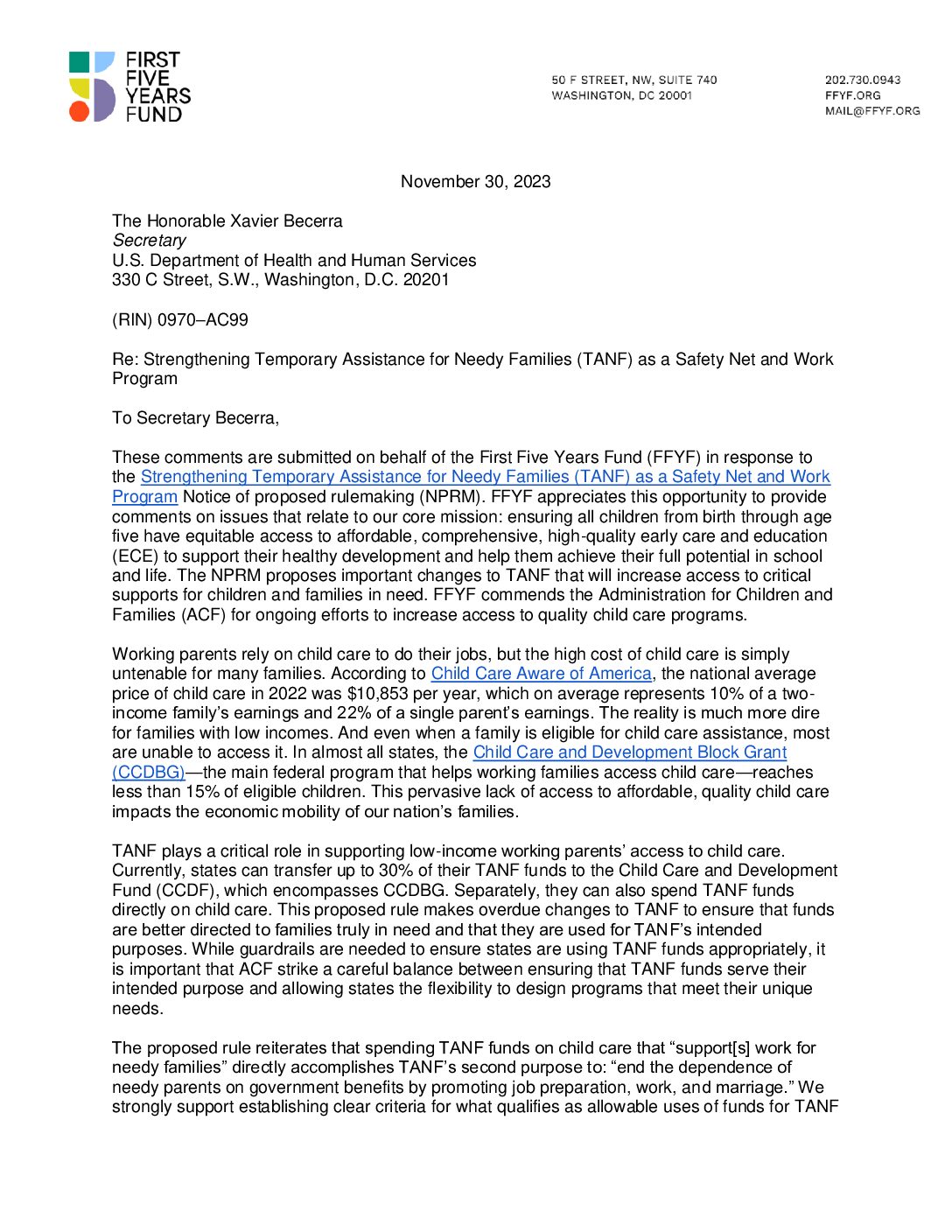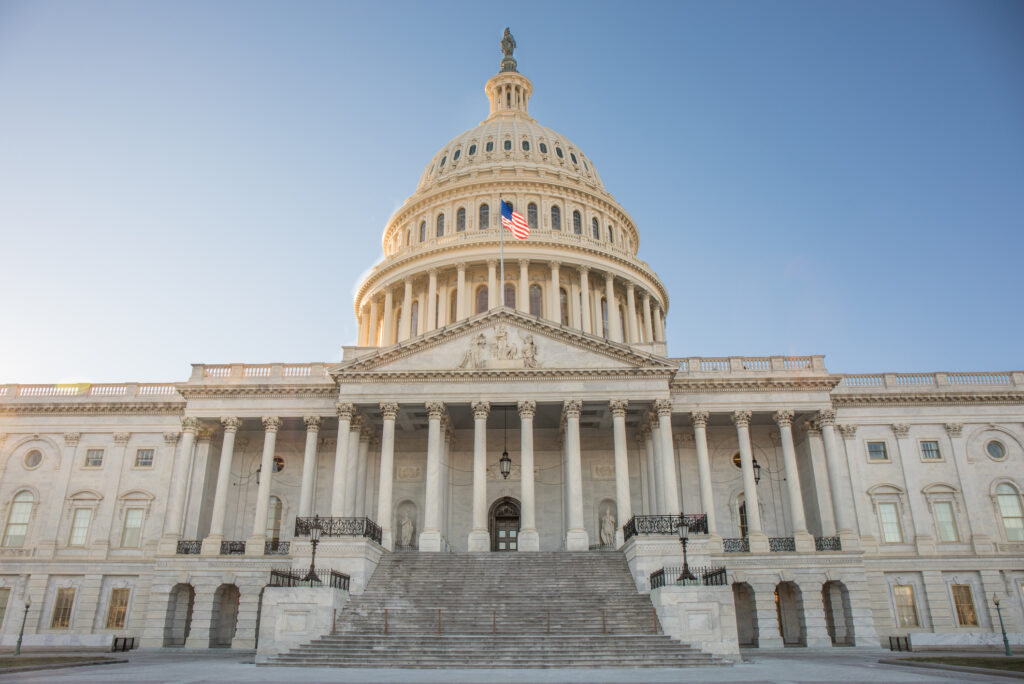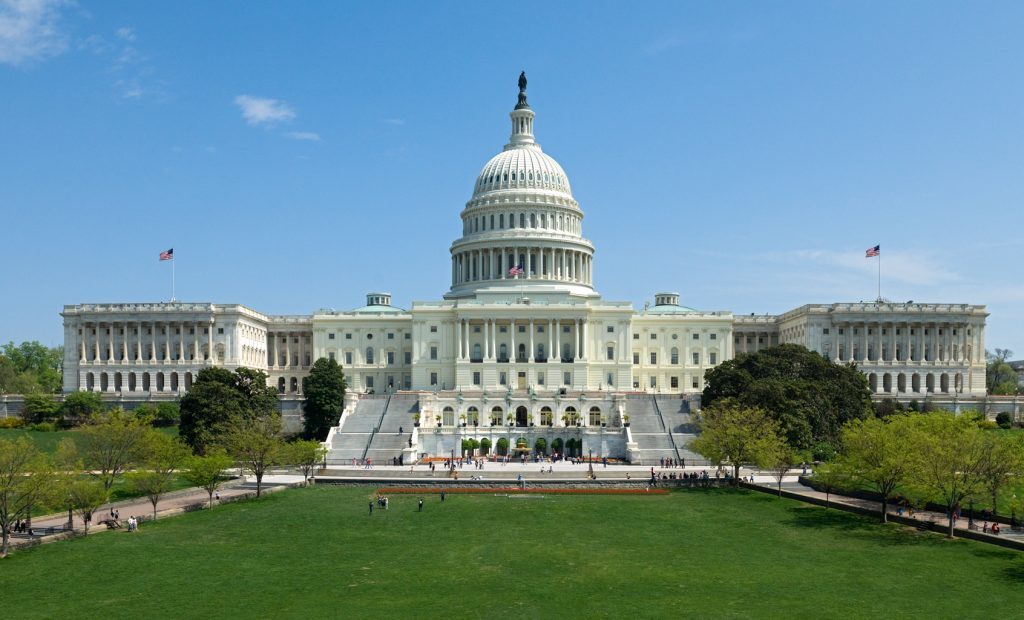FFYF Submits Comments on 2023 Temporary Assistance for Needy Families NPRM

On October 2, 2023, the U.S. Department of Health and Human Services announced a notice of proposed rulemaking (NPRM) that would strengthen the Temporary Assistance for Needy Families (TANF) program. TANF provides grants to states to design and operate programs that support low-income families, including through increased access to child care and early education opportunities, which helps parents participate in the workforce. This proposed rule makes needed changes to the program to ensure that funds are better directed to families truly in need and that they are used for TANF’s intended purposes.
For many families with young children, access to affordable child care is key to finding and maintaining employment, and ultimately getting out of poverty. Decades of research show that access to quality early learning programs has immediate and long-term benefits for children and their families. Unfortunately, the high cost and limited availability of child care continue to be key barriers to families.
TANF plays an important role in supporting low-income working parents’ access to child care. States can transfer up to 30% of their TANF funds to the Child Care and Development Fund (CCDF), which encompasses CCDBG. States can also spend TANF funds directly on child care, known as “direct spend.” There are benefits to transferring funds to CCDF because a child care program must meet quality and health/safety standards to receive CCDF funds. However, many states strongly value flexibility to utilize both direct spend as well as CCDF transfer to support families in accessing child care. While almost all states and the District of Columbia transfer some amount of their TANF funds to early care and learning programs, they could be transferring significantly more, as FY2021 data show that states do not come close to reaching the 30% allowable transfer.
FFYF submitted comments to express our support for establishing clear criteria for what qualifies as allowable uses of TANF funds. This should encourage states to direct more TANF funds to child care as this use clearly passes the proposed “reasonable person” test. We support encouraging states to direct more funds to CCDF without limiting the flexibility allowed under current law. While we acknowledge the benefits of transferring funds to CCDF, directly spending funds on child care allows states to maximize their use of TANF to meet state-specific needs. “Direct spend” does not necessarily equate to low-quality child care, as states can and should create infrastructures to support quality outside of federal regulations.
The proposed changes establish important parameters around how TANF dollars are used to ensure that the program is fulfilling its original purpose and set children and families on a path for success.
The full text of the letter appears below.
Subscribe to FFYF First Look
Every morning, FFYF reports on the latest child care & early learning news from across the country. Subscribe and take 5 minutes to know what's happening in early childhood education.




